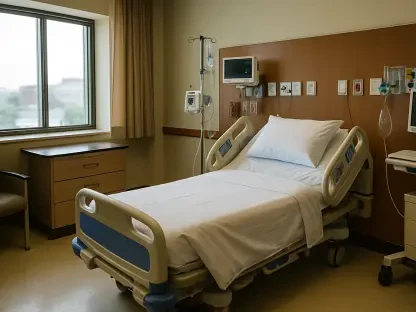Saskatchewan is taking significant measures to revolutionize its healthcare sector. Through focused recruitment, strategic training, and improved infrastructure, the province is demonstrating its commitment to superior healthcare services for its residents.
Recruitment of Internationally Educated Healthcare Professionals
A Strategic Shift in Recruitment
In September 2022, Saskatchewan launched the Health Human Resources Action Plan (HHRAP) with the goal of addressing critical workforce shortages. Estevan MLA Lori Carr has highlighted substantial achievements within the first two years of this initiative. Successfully recruiting from countries like the Philippines and Ukraine, the province has seen 373 internationally educated professionals arrive, with 290 already integrated into various Saskatchewan communities. The remaining 83 professionals are currently in the process of bridging their accreditations to meet provincial standards. This comprehensive and accelerated integration process has dramatically reduced the time required for these healthcare workers to transition into the local workforce, slashing the adaptation period from 12 years to just 12 weeks. This remarkable efficiency reflects the strategic and purposeful planning behind the HHRAP, showcasing the government’s dedication to fortifying the healthcare workforce swiftly and effectively.
The initiative not only addresses immediate workforce shortages but also aims to sustain long-term healthcare service quality by creating a more diverse and robust team of professionals. Saskatchewan’s approach demonstrates a proactive and forward-thinking strategy, understanding that a strong healthcare system is fundamental to the well-being of its residents. By attracting talent from abroad and ensuring a smooth integration, the province is laying a solid foundation for future healthcare improvements and maintaining a high standard of patient care.
Local Training and Fast-Track Pathways
Complementing the international recruitment efforts, the HHRAP also emphasizes expanding local training capacities. Significant investments have been made to increase local training seats and establish fast-track training, assessment, and licensing pathways for internationally educated nurses. Since the plan’s inception, Saskatchewan has hired 1,279 nursing graduates from within the province and other Canadian regions, addressing immediate staffing needs and fortifying the local healthcare ecosystem. The employment of nurse practitioners has witnessed notable improvement as well. Since June 2024, seven full-time nurse practitioners have been employed across various healthcare capacities, with one position still open in Estevan. These initiatives are instrumental in filling critical gaps in the healthcare workforce while ensuring that the integrative measures remain efficient and effective.
Local training and fast-track pathways are not only about filling positions quickly but also about maintaining high standards of care. By ensuring that internationally educated nurses and local graduates are well-equipped and swiftly integrated into the system, Saskatchewan can sustain a responsive and dynamic healthcare workforce. These efforts are crucial in stabilizing the healthcare sector, particularly in rural and underserved regions, thereby improving healthcare accessibility and quality for all residents. Saskatchewan’s multi-faceted approach, combining international recruitment with robust local training, sets a precedent for effective workforce management and long-term healthcare sustainability.
Reductions in Surgical Wait Times
Notable Achievements in Reducing Wait Times
One of the most significant successes of the HHRAP lies in its impact on surgical wait times. Saskatchewan has made remarkable strides in reducing these times, brought down to below the benchmarks set in 2007 and 2010 for all long-waiting categories—a feat that hadn’t been achieved since 2020. This milestone underscores the province’s dedicated efforts towards optimizing healthcare service delivery and ensuring that patients receive timely surgical interventions. By focusing on reducing wait times, Saskatchewan is directly addressing one of the most pressing concerns in healthcare: the delay in critical medical procedures. This achievement not only improves patient outcomes but also reflects a more efficient and responsive healthcare system.
The province’s focus on this area demonstrates a profound commitment to enhancing overall healthcare efficiency. Reducing surgical wait times is essential for minimizing patient discomfort and preventing the complications that can arise from delayed medical procedures. This accomplishment represents Saskatchewan’s comprehensive approach to healthcare reform, where strategic initiatives are meticulously planned and executed to deliver tangible and impactful results. It sets a benchmark for other regions grappling with similar challenges and showcases what can be achieved through focused and sustained efforts.
Sustaining Healthcare Improvements
While significant progress has been made, MLA Lori Carr acknowledges that sustaining these improvements requires continuous effort. The reduction in surgical wait times is a notable achievement, but maintaining these gains necessitates ongoing focus and dedication. Saskatchewan’s strategy involves not just short-term solutions but also planning for long-term healthcare enhancements. The province’s approach illustrates a relentless commitment to patient care and underscores the importance of consistent investment and attention to healthcare infrastructure and resources. Ensuring that these advancements are sustained involves continuous evaluation, adaptation, and refinement of healthcare practices and policies.
Carr emphasizes that the journey towards an optimized healthcare system is always ongoing, requiring persistent efforts to build upon successes and address emerging challenges. By focusing on ongoing improvements, Saskatchewan aims to create a sustainable healthcare environment where patient needs are met promptly, and high standards of medical care are maintained consistently. This holistic approach ensures that the healthcare system does not just react to immediate pressures but evolves continuously to meet the changing needs of its populace, ultimately ensuring a more stable and reliable healthcare system for the future.
Future Infrastructure Developments
The Upcoming MRI Machine in Estevan
Looking toward the future, one of the most notable infrastructure developments in Saskatchewan involves the installation of an MRI machine in Estevan. This addition is anticipated to dramatically enhance healthcare accessibility for residents by reducing the need for lengthy travel to other regions for diagnostic services. The campaign to secure funding for this vital initiative has already garnered $4 million out of a $6.5 million goal, with a generous $2 million donation from Elaine Walkcom significantly advancing the effort. This new equipment is just one facet of a broader renovation project led by Emmanuel Health and Saint Joseph’s Hospital, intending to improve both patient and staff services.
The forthcoming MRI machine is poised to bring substantial benefits to the local healthcare landscape. By providing critical diagnostic services closer to home, it will reduce both the financial and time burdens on patients, ensuring quicker and more efficient medical care. This move aligns with the province’s broader objectives of enhancing healthcare infrastructure to support a more efficient and patient-centered system. The installation of the MRI machine represents a significant step forward in meeting the diagnostic needs of the Estevan community and underscores the province’s dedication to improving overall healthcare service delivery.
Government Support and Operational Funding
The Saskatchewan government has pledged to cover the ongoing operational costs once the MRI and other services become functional, ensuring that these high standards of service and care are maintained sustainably. This commitment is crucial for the long-term success of the new infrastructure, ensuring that the equipment and facilities continue to operate efficiently and effectively. By guaranteeing operational funding, the government underscores its long-term vision for healthcare improvements and its commitment to providing continued support to new initiatives. This financial backing ensures that the high-quality care associated with new infrastructures, like the MRI machine, is not only achieved but also sustained over time.
This government support is a critical component of the broader strategy to enhance healthcare service availability and accessibility across Saskatchewan. It demonstrates a holistic approach to healthcare reform, where infrastructure improvements are complemented by assured financial sustainability. This ensures that advancements in healthcare facilities translate into tangible long-term benefits for residents, providing them with reliable, high-quality medical services. The province’s pledge to cover operational costs reflects its dedication to maintaining healthcare excellence, promoting a stable and dependable healthcare environment for all.
Local Community Engagement and Initiatives
Active Community Participation
Saskatchewan’s healthcare reforms are set against a vibrant backdrop of community involvement and participation. Recent local news indicates the effectiveness of the Saskatchewan Enforcement Response Team (SERT) in reducing crime rates, including drug-related offenses, showcasing a broader commitment to public safety and well-being. Additionally, the provincial government has extended grants for childcare wages, symbolizing broader socio-economic advancements and a comprehensive approach to improving quality of life. These initiatives reflect an overarching strategy that encompasses health, safety, and social welfare, creating a more integrated and supportive community environment.
The active engagement of the community is further evident through various local events and activities such as Tween Video Games, Toddler Time, and the History Hub After School Club. These programs illustrate a thriving populace that actively supports and benefits from the government’s efforts to enhance public welfare. Community involvement in such activities fosters a sense of unity and participation, contributing to the overall socio-economic vibrancy of the province. This high level of public engagement complements healthcare reforms by building a more supportive and cohesive community that values and contributes to the well-being of its members.
Employment Opportunities
Saskatchewan is making transformative strides in its healthcare sector, addressing the needs of its residents through a multifaceted approach. The province is focusing on a comprehensive recruitment drive to attract skilled healthcare professionals. Besides recruitment, Saskatchewan is highly invested in the strategic training of its medical personnel, ensuring that both new and existing staff are equipped with the latest knowledge and skills. This dedication to training provides a strong foundation for quality healthcare delivery. Additionally, significant improvements are being made to the healthcare infrastructure across the province. New facilities are being constructed, and existing ones are being upgraded to meet modern standards. These infrastructure improvements are crucial in providing high-quality medical services and ensuring that all residents have access to state-of-the-art healthcare. Through these combined efforts in recruitment, training, and infrastructure development, Saskatchewan is showcasing its unwavering commitment to offering superior healthcare services to its residents, aiming to set a benchmark in the quality and accessibility of medical care.









